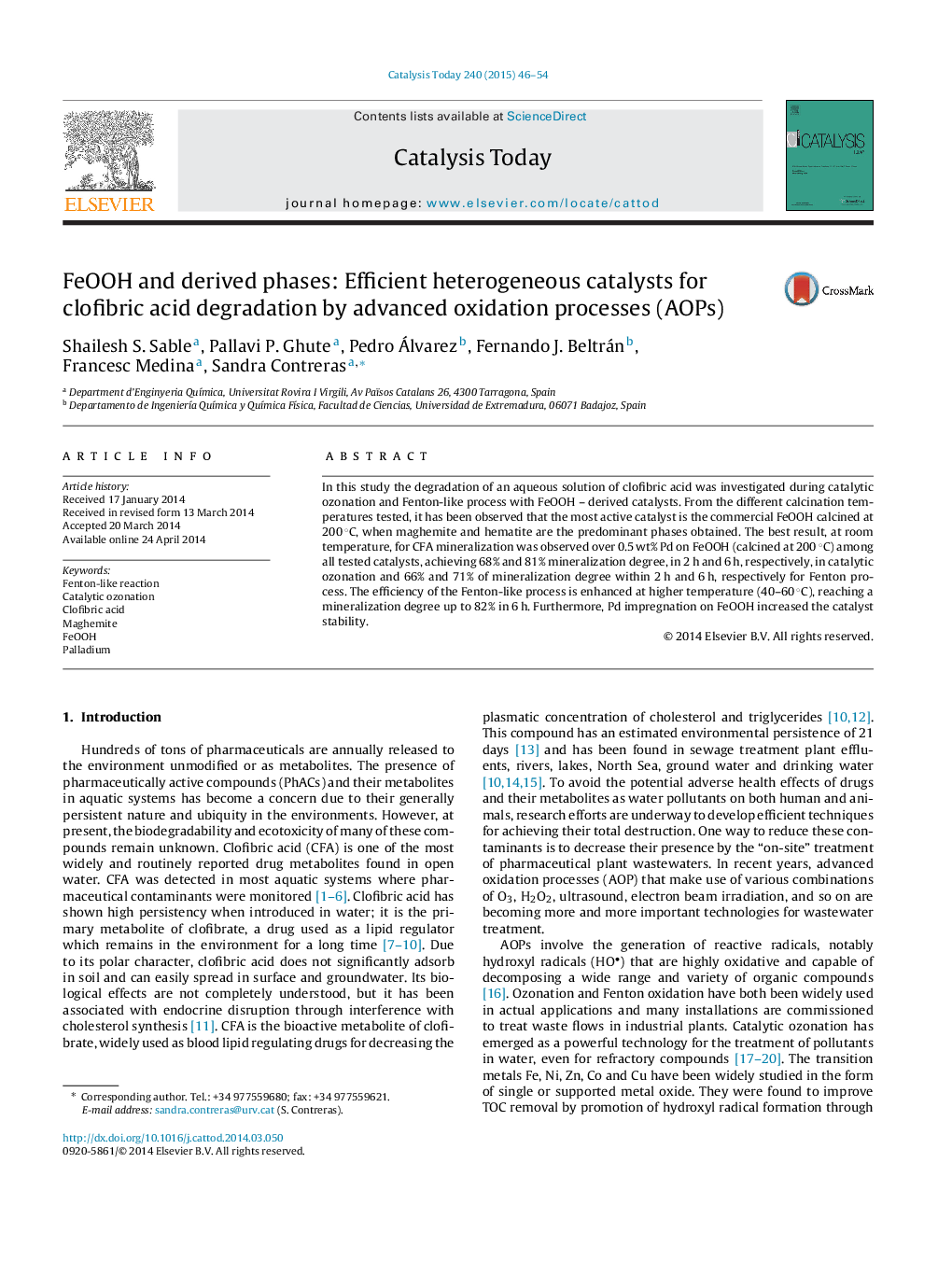| Article ID | Journal | Published Year | Pages | File Type |
|---|---|---|---|---|
| 54426 | Catalysis Today | 2015 | 9 Pages |
•FeOOH-derived materials have shown to be highly active and stable catalysts for AOPs.•High removal and mineralization degrees of CFA achieved in short reaction times.•Addition of little amount of Pd on FeOOH improved the activity and stability.•66 and 68% mineralization after 2 h of Fenton-like and catalytic ozonation, respectively.•Parametric study leads to the optimization of Fenton-like process.
In this study the degradation of an aqueous solution of clofibric acid was investigated during catalytic ozonation and Fenton-like process with FeOOH – derived catalysts. From the different calcination temperatures tested, it has been observed that the most active catalyst is the commercial FeOOH calcined at 200 °C, when maghemite and hematite are the predominant phases obtained. The best result, at room temperature, for CFA mineralization was observed over 0.5 wt% Pd on FeOOH (calcined at 200 °C) among all tested catalysts, achieving 68% and 81% mineralization degree, in 2 h and 6 h, respectively, in catalytic ozonation and 66% and 71% of mineralization degree within 2 h and 6 h, respectively for Fenton process. The efficiency of the Fenton-like process is enhanced at higher temperature (40–60 °C), reaching a mineralization degree up to 82% in 6 h. Furthermore, Pd impregnation on FeOOH increased the catalyst stability.
Graphical abstractFigure optionsDownload full-size imageDownload high-quality image (196 K)Download as PowerPoint slide
